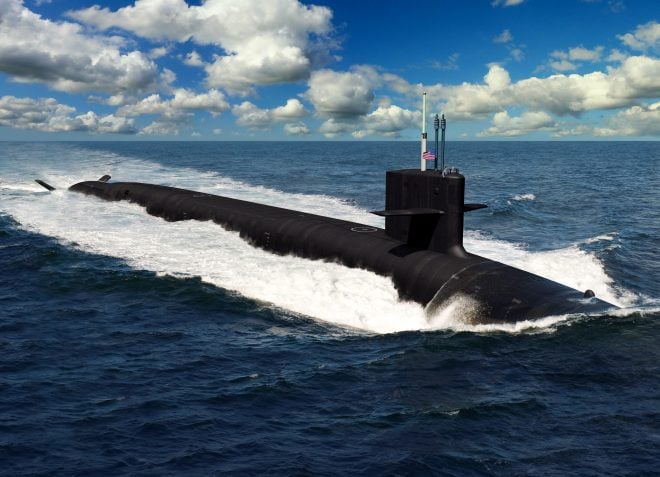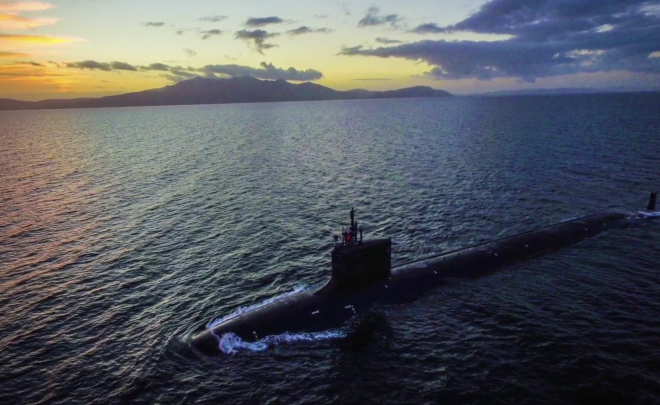This is a sister thread of US Navy News and updates
General Dynamics Electric Boat (GDEB), announced on 5 Nov 2020 that the U.S. Navy has awarded it a US$9.474 billion contract modification option for construction and test of the lead and second ships of the Columbia class, as well as associated design and engineering support.
The Columbia (SSBN-826) class program is a program to design and build a class of 12 new ballistic missile submarines (SSBNs) to replace the United States Navy’s current force of 14 agings Ohio-class SSBNs. The U.S. Navy has identified the Columbia-class program as the U.S. Navy’s top priority program.
The U.S. Navy’s four Ohio Class cruise missile submarines (SSGNs) can carry a total of 154 Tomahawk Land Attack Cruise Missiles (TLAM Block-IV) in their missile silos. When added to the torpedo room, this gives a total of 176 full-size weapons. And the submarines may soon receive new hypersonic missiles which could transform their capabilities. The new missile, being developed under the Conventional Prompt Strike (CPS) program,
The U.S. Navy has planned to procure the first Columbia-class boat in FY2021. Research and development work on the program has been underway for several years, and advance procurement (AP) funding for the first boat began in FY2017.
The U.S. Navy’s FY2021 budget submission estimates the procurement cost of the first Columbia- class boat at US$14,393.4 million (i.e., about US$14.4 billion) in then-year dollars, including US$6,007.8 million (i.e., about US$6.0 billion) in costs for plans, meaning (essentially) the detail design/non- recurring engineering (DD/NRE) costs for the Columbia class.
It is a longstanding Navy budgetary practice to incorporate the DD/NRE costs for a new class of ship into the total procurement cost of the first ship in the class.
At 561 feet/171 meters long with a displacement of nearly 21,000 tons, the submarines of the Columbia class will be the largest ever built by the United States. Ships of the Columbia class will have a life-of-ship fuel core that will power the submarine for its entire service life, eliminating the need for a mid-service refueling. Electric Boat will deliver the lead ship to the U.S. Navy in 2027.

 news.usni.org
news.usni.org
General Dynamics Electric Boat (GDEB), announced on 5 Nov 2020 that the U.S. Navy has awarded it a US$9.474 billion contract modification option for construction and test of the lead and second ships of the Columbia class, as well as associated design and engineering support.
The Columbia (SSBN-826) class program is a program to design and build a class of 12 new ballistic missile submarines (SSBNs) to replace the United States Navy’s current force of 14 agings Ohio-class SSBNs. The U.S. Navy has identified the Columbia-class program as the U.S. Navy’s top priority program.
The U.S. Navy’s four Ohio Class cruise missile submarines (SSGNs) can carry a total of 154 Tomahawk Land Attack Cruise Missiles (TLAM Block-IV) in their missile silos. When added to the torpedo room, this gives a total of 176 full-size weapons. And the submarines may soon receive new hypersonic missiles which could transform their capabilities. The new missile, being developed under the Conventional Prompt Strike (CPS) program,
The U.S. Navy has planned to procure the first Columbia-class boat in FY2021. Research and development work on the program has been underway for several years, and advance procurement (AP) funding for the first boat began in FY2017.
The U.S. Navy’s FY2021 budget submission estimates the procurement cost of the first Columbia- class boat at US$14,393.4 million (i.e., about US$14.4 billion) in then-year dollars, including US$6,007.8 million (i.e., about US$6.0 billion) in costs for plans, meaning (essentially) the detail design/non- recurring engineering (DD/NRE) costs for the Columbia class.
It is a longstanding Navy budgetary practice to incorporate the DD/NRE costs for a new class of ship into the total procurement cost of the first ship in the class.
| Type | Ballistic missile submarine (SSBN) |
| Displacement (submerged) | 20,810 long tons/metric tons 21,144 |
| Length | 561 feet/171 m |
| Hull Diameter | 43 feet/13.1 m |
| Speed | 20+ knots/23+ mph/37 km/h |
| Diving Depth | 800+ feet/244+ m |
| Range | Unlimited |
| Complement | 155 (accommodation) |
| Propulsion | Nuclear, Electric Drive |
| Missile Tubes | 16 |
| Weapons System | Trident II D5 (LE) |

Report on the Columbia-class Nuclear Ballistic Missile Submarine Program - USNI News
The following is the Feb. 26, 2020 Congressional Research Service report, Navy Columbia (SSBN-826) Class Ballistic Missile Submarine Program: Background and Issues for Congress. From the report The Columbia (SSBN-826) class program is a program to design and build a class of 12 new ballistic...
Last edited:


